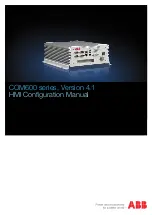
07 DSP
29
The TS-950 series HF transceivers were the world’s first amateur radios with built-in DSPs.
The TS-870S achieves all IF signal processing with DSP, including the IF AGC for controlling the received signal level
and the steep IF filter.
The TS-590S series provides evolved IF AGC for fine sound quality durable over long-time operation and functions for
noise/interference rejection and boasts of top-level reception characteristics by means of DSP.
The TS-990S series is an integration of our traditional techniques
We have been providing “Quality” in communications that cannot be realized only by analog circuits.
The development concept of the DSP for the TS-890S is the ability of its application to actual operations. It has gone
through a thorough brush-up to deliver the best performance under harsh and unfavorable conditions.
Features of TS-890S DSP Technologies
• Two 32-bit floating-point DSPs for transmission/reception and bandscope respectively
• A significantly wider range of IF filter options
• AGC Quick Recovery feature added to the well-received IF-AGC
• Two types of digital noise blankers
• Bandscope with high resolution and high display refresh speed
DSPs and Peripheral Hardware
32-bit floating-point DSP SHARC processor made by Analog Devices Inc., the same processor used on the TS-990S,
has been adopted for the DSPs of the TS-890S, which are kernels of digital signal processing. There are two SHARC
processors (referred to as DSPs hereafter) on the TS-890S.
Fig. 30 Two SHARC Processors
The DSP for transmission and reception is called the “TXMRX DSP”, while the DSP for signal processing for display
on the bandscope and other devices as well as for decoding in RTTY and PSK31/PSK63 modes is called the “SCP
DSP”. The TXMRX DSP and SCP DSP are placed in the DSP unit and DSPs are linked together to perform digital signal
processing.
















































